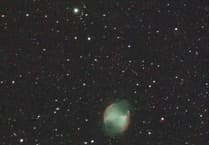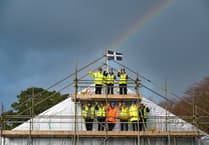The sun sets at around 1900 BST by the end of September, an hour earlier than in August, so make the most of the remaining light evenings while appreciating that this is a great month for observing the night sky, precisely because it gets dark at a reasonable hour and is not too cold.
Some exciting news: a supernova is coming! Sometime before the end of September, we are expecting a new star to “blaze” for about a week in the constellation of the Northern Crown or Corona Borealis. Don’t miss it – you’ll be waiting 80 years for it to happen again.
The sun is still pretty active, but the shorter hours of daylight naturally increase the opportunity to see any aurora. It reaches its equinox on September 22, and it’s all downhill from there - the rainy season will soon be upon us! Keep up to date at www.spaceweather.com
The stages of the moon are: New Moon, September 3; First Quarter, September 11; Full Moon, September 18; Last Quarter, September 24. This full moon is known as the Corn Moon, because it appears particularly bright and rises early, letting farmers continue harvesting into the night.
As for the planets, Venus can be well seen in the evening sky in Libra, with Jupiter moving east in Taurus and Saturn in Aquarius.
Comet Atlas should emerge from behind the sun mid-month and may become visible in daylight, more likely in the southern hemisphere.
Brian Sheen runs Roseland Observatory at Truro High School for Girls. Visit www.roselandobservatory.co.uk





Comments
This article has no comments yet. Be the first to leave a comment.